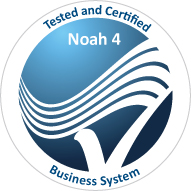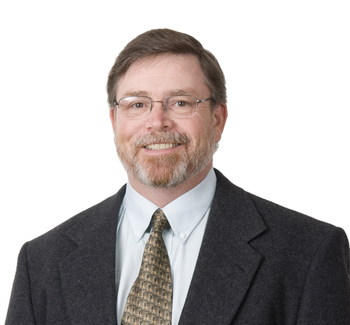TIMS Audiology Practice Management Software: Features and Benefits
Carolyn Smaka: Welcome Tom. TIMS Software has been in the industry as long as I can remember. Can you tell me how it got started, and a bit about the company’s background?

Tom Robbins: Sure can. Computers Unlimited (CU) is a 35 years old and privately held company with Dr. Michael Schaer founding the company in 1978. TIMS Software is an integrated software solution that is available in three distinct markets: Audiologists & Hearing Professionals, Industrial Gas and Welding Supply Distributors and the HME/DME and Closed Pharmacy Providers. The audiology portion of the software has been on the market since 1997.
Carolyn: How did you get involved with TIMS?
Tom: I actually developed this software in 1996, and prior to that I was in the Navy for 20 years. I started a couple of businesses, one of which originally developed this software. We were purchased by Computers Unlimited about 12 or 13 years ago, and I have been involved with the sales and marketing of the software from day one, essentially.
Carolyn: There are a few software programs out there for audiologists to choose from. What are the benefits of TIMS or what makes it unique?
Tom: TIMS was the first product to be NOAH-certified and we have stayed NOAH-certified. This allowed us to incorporate all of the functionality and data that is within NOAH into our database and provide that data to any location using our software. TIMS not only provides the NOAH data, but it also does everything from scheduling and Point of Sale to electronic claims and marketing. And because we track all the sales revenue and inventory of devices, there is a complete audit trail of both the devices and revenue in the practice. In addition, TIMS can handle patient recall functions and marketing functions.
While there are now other NOAH-certified products available, the difference is that TIMS is completely integrated. We store all the NOAH data in our database, do offsite backups to make the data available for reporting purposes and we do the data migration between locations. To do that, we have to submit our software for conformance testing to HIMSA and test against every fitting measure and module worldwide every year.

Right now, TIMS is the only non-web-based product on the market. One of the major advantages to this is – there are times when the Internet is not available, either at the customer location or on the backend from the Internet Service Provider (ISP). With TIMS’ data structure, you always have access to your data since there is a database in each office. For example, if there are connectivity issues, you can access all of your data, do all the work you need to do, and then when the connectivity comes back up, the synchronization process is handled in the background. The data moves out to your external offices and you do not lose any work. And, with our interface, you can access the software on a laptop and not be required to have internet connectivity, which is a substantial cost savings. TIMS allows you to access your data, collect new data, do testing, generate reports, come back to the office, and then synchronize that data back into the master database – all without Internet access.
Carolyn: I know the electronic medical record (EMR) or electronic health record is becoming increasingly important. Does TIMS support EMR?
Tom: Yes, TIMS is a complete electronic medical record. We store all the data in the customer’s location. We only need Internet connectivity to synchronize data between different locations, or traveling devices such as laptops. We are also fully independent, in that we do not have a relationship with a hearing aid manufacturer, meaning – we do not share our customers’ data.
One of the big issues practices face is the need to communicate with other electronic medical record systems.
TIMS has had an HL7 interface for several years, and that allows us to communicate with those large hospital systems, ENT systems, or any other electronic medical record systems. The HL7 interface allows the clinic to run autonomously on TIMS and share information bidirectionally between TIMS and the legacy systems to ensure that the EMR systems are kept up-to-date.
This is a real time-saving functionality for organizations. Instead of requiring two or three separate applications to document an interaction, we can now accomplish it within TIMS and provide the data to all of the hospital systems.
Carolyn: How often do you have new enhancements or features, and how are those accessed?
Tom: We have an auto-updater. Once the TIMS software is installed and configured, we produce new updates that can be pushed down to the customer location. So the next time the customer signs in, the new version will be on their system. We typically come out with one major upgrade every year and several minor updates throughout the year.
Carolyn: Support is an important component of the whole package, when audiologists are considering practice management software. What kind of support does TIMS provide?
Tom: Our support hours run from 7 am to 6 pm MST. Customers can call in for support and speak with one of our six support staff members here in our Billings, Montana office. We cover TIMS support and the initial TIMS training, as well as ongoing training needs. We handle the TIMS installations remotely using the same process. When a customer is new to TIMS, we provide all of the training and customization to their database, plus we also train the office staff, both initially and on an ongoing basis.
Carolyn: A lot of audiologists tell us they need help with marketing. How does TIMS support a practice’s marketing?
Tom: One unique feature of TIMS is Opportunity Tracking. This marketing feature tracks from the time someone is added into your database, all the way through the entire sales process.
So here is how this works: Once a patient is entered into the database, TIMS identifies that they are a ‘sales opportunity’. Then, once a NOAH audiogram has been plotted, the patient is then identified as a ‘tested not sold’ opportunity. We then compare that NOAH audiogram against the user-defined thresholds in TIMS for aid-ability – this is to see if they are a candidate for amplification, or another sales opportunity if you will.
Once a patient has been fit with a hearing aid, we track from the date of sale to the user-defined threshold, say 36 months for example. At the end of a threshold, the patient then becomes a ‘resale opportunity’. TIMS also tracks ROI on marketing campaigns in addition to offering recall processes – such as birthday letters, warranty letters, and those types of things.

Carolyn: Tell me about electronic appointment confirmations and notifications.
Tom: This is a new feature we added a few months ago. After a patient has scheduled an appointment, TIMS will send out a customized email to those patients. The practice can customize the email as they see fit. The day before the appointment, the practice can send out either a text message, an email or a voice notification to confirm the appointment. In the case of the text messages and the voice notifications, the patient can respond to those, and if they do, the status on the schedule gets updated. The patient’s status on your schedule will indicate if they confirmed the appointment, or if you need to call to reschedule. It is a really nice way to keep that line of communication going with your customers, and, to help eliminate some workload so your office staff can better focus on the task at hand.
Carolyn: Can you touch on reports, such as diagnostic reports?
Tom: Yes, in addition to a host of customizable reports, professionals really like the TIMS Diagnostic Report. With this particular report, we take the NOAH data, incorporate it into an electronic chart note and generate a report that can go out to the referring physician.
We have also recently added an Electronic Superbill, which ensures that everything sold, or every procedure performed during the appointment, is billed or invoiced correctly. These transactions build the purchase agreements, invoices for Point of Sale, and also generate the claims data. It wraps up all of the customer interaction to ensure everything is getting billed accurately and in a timely manner.
Carolyn: It has been great learning about TIMS today. Thanks for your time.
Tom: Thanks, Carolyn.
For more information about TIMS, please visit https://www.timssoftware.com/


